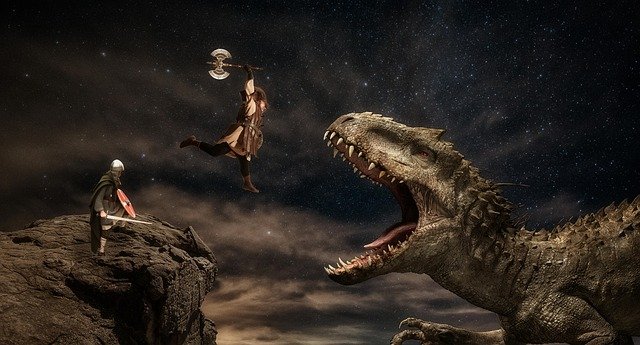Animation has become an integral part of modern marketing, entertainment, and brand communication. Whether in films, commercials, explainer videos, or product showcases, animation brings ideas to life in ways static visuals cannot. While both 2D and 3D animation have their strengths, knowing when to use one over the other can make a significant difference in impact and effectiveness. Companies like M4b Media Production specialize in helping businesses determine the best animation approach to achieve their goals and connect with their target audience.
Understanding the Difference Between 2D and 3D Animation
What is 2D Animation?
2D animation creates visuals using two-dimensional space. It is flat in appearance and often relies on artistic illustrations, characters, and movements to tell a story. This style is widely recognized for its simplicity, affordability, and nostalgic appeal, making it a popular choice for certain marketing campaigns and explainer videos.
What is 3D Animation?
3D animation builds visuals in three-dimensional space, giving depth, volume, and realism to characters and objects. Using advanced software, 3D animation allows for highly detailed movements and lifelike simulations. It is frequently used in films, gaming, architecture, and marketing campaigns that require immersive and visually striking content.
When 3D Animation Outshines 2D Animation
Complex Product Demonstrations
When showcasing intricate products such as machinery, technology devices, or medical equipment, 3D animation provides clarity that 2D simply cannot. It allows businesses to demonstrate internal components, real-world functionality, and interactive perspectives. Brands often rely on professional M4b Media Services to design product animations that explain features in detail while keeping the viewer engaged.
Realistic and Immersive Storytelling
For projects that require realism, 3D animation is the stronger choice. Whether simulating architectural designs, visualizing prototypes, or producing lifelike characters, 3D creates a sense of immersion that captures audience attention. This realism can influence decision-making, particularly in industries like real estate, healthcare, and engineering.
High-Impact Marketing Campaigns
3D animation often works better for campaigns where visual impact is critical. Advertisements, brand launches, or product showcases benefit from 3D’s ability to impress viewers and leave a lasting impression. Its versatility across platforms, from television to interactive websites, makes it a powerful marketing asset.
Why 2D Still Has Its Place
Cost-Effectiveness and Simplicity
2D animation is more budget-friendly and faster to produce compared to 3D. For businesses seeking straightforward storytelling without the need for heavy realism, 2D remains effective. It is especially valuable for explainer videos, social media content, and campaigns targeting younger audiences who connect with simple visuals.
Nostalgic and Artistic Appeal
Many brands choose 2D animation for its nostalgic charm and artistic style. This format resonates with audiences who appreciate traditional animation aesthetics. It also allows for creative freedom in storytelling, making it ideal for campaigns that rely on humor, playfulness, or abstract visuals.
Comparing 2D and 3D in Different Industries
Marketing and Advertising
In advertising, 3D animation is often favored for product showcases and immersive brand campaigns, while 2D animation excels at short-form storytelling on social media.
Entertainment and Gaming
The entertainment industry often blends both. Films and high-end games lean toward 3D for realism, while cartoons and casual games maintain the appeal of 2D for lighthearted experiences.
Education and Training
Educational platforms use both formats depending on the subject. 2D animation works well for simple concepts, while 3D is preferred for technical subjects like anatomy or engineering.
The Future of Animation
Animation continues to evolve with technology, and the gap between 2D and 3D is narrowing. Hybrid approaches that combine both styles are becoming more popular, giving brands the ability to balance simplicity with realism. As consumer expectations grow, animation will remain a central tool for storytelling, branding, and communication.
Why Choose Professional Animation Services
Expertise in Multiple Styles
Professional teams have the skills to create both 2D and 3D animations, ensuring businesses get the right style for their objectives. They assess the brand message, target audience, and campaign goals to recommend the best approach.
Technical Excellence and Creativity
Animation requires more than software—it demands creative storytelling, technical precision, and a strong visual identity. Professional services ensure animations are polished, engaging, and aligned with brand strategy.
Maximizing Market Impact
High-quality animations elevate a brand’s reputation and visibility. Whether 2D or 3D, well-produced content delivers measurable impact, attracting customers and building trust in the brand.
Conclusion
Both 2D and 3D animation have their unique strengths, but knowing when to choose one over the other can define the success of a campaign. 2D offers affordability, simplicity, and charm, while 3D delivers realism, immersion, and high-impact visuals. Businesses that invest in professional animation services can ensure they use the right format for their goals, achieving stronger engagement and lasting market impact. In today’s competitive environment, the question is not whether to use animation, but how to use it effectively to elevate brand presence and storytelling.
FAQs
Q1: When should I choose 3D animation over 2D?
3D is ideal for projects requiring realism, complex product demonstrations, or immersive storytelling that 2D cannot achieve.
Q2: Is 2D animation still relevant in modern marketing?
Yes, 2D remains effective for simple storytelling, cost-efficient projects, and campaigns that emphasize creativity or nostalgia.
Q3: Which industries benefit most from 3D animation?
Industries like real estate, healthcare, gaming, and technology often benefit the most from 3D animation due to its realism and clarity.
Q4: Can 2D and 3D animation be combined in one project?
Absolutely. Many modern campaigns use hybrid approaches, blending 2D and 3D to balance simplicity with high visual impact.
Q5: Do professional services make a big difference in animation quality?
Yes, professional services provide technical expertise and creative direction, ensuring the final product is polished, strategic, and engaging.







